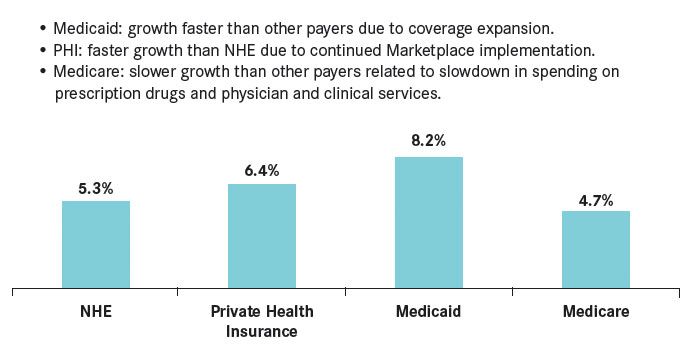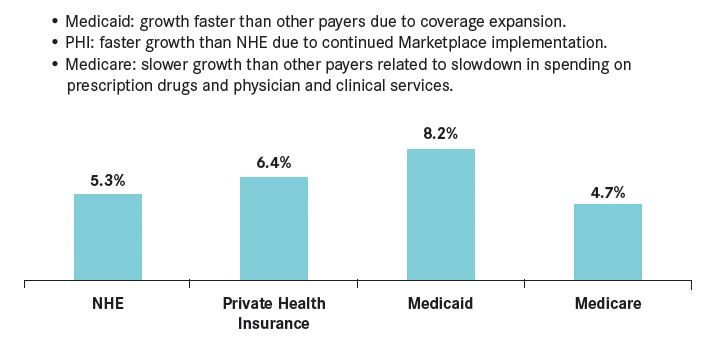Publication
Article
Oncology Business News®
As Practice Grows, Competitors Loom
Author(s):
Established just nine years ago via the merger of three specialty practices and 14 physicians, Dayton Physicians Network, an independent, Ohio-based oncology group practice, has experienced rapid growth, fueled in part by increased Medicaid enrollment and profits from their oral drug dispensing program.
Charles M. Bane, MD
Established just nine years ago via the merger of three specialty practices and 14 physicians, Dayton Physicians Network, an independent, Ohio-based oncology group practice, has experienced rapid growth, fueled in part by increased Medicaid enrollment and profits from their oral drug dispensing program.
“Medicaid is now the fastest-growing segment of our business. Basically, Medicaid volume has doubled in the past few years,” said Robert Baird, CEO.
“Physician dispensing of oral oncolytics has been a significant revenue generator for us, as well,” added Charles M. Bane, MD.
The Dayton Market
As competition for the pharmacy and Medicare/Medicaid dollar intensifies and major regional players expand their operations, only time will tell if the Dayton physicians will be able to maintain their performance. Dayton, whose three original specialty practices were medical oncology, radiation oncology, and imaging and urology, now encompasses 36 physicians, seven midlevel providers, and 350 employees at 18 practice locations (six of which are cancer centers), serving roughly 43,000 patients in several counties—a population of urban, suburban, and rural patients, many of them older adults. Baird estimates that roughly half of their patients are covered by Medicare.Key rivals include larger hospital and health systems, such as Kettering Health Network—a conglomeration of eight hospitals, nine emergency departments, and 120 outpatient facilities staffed by 2,100 physicians and almost 11,000 employees throughout southwest Ohio—which is currently building a $49-million, five-story, 120,000-square-foot cancer center slated to open late next year in Kettering, Ohio, right in the heart of the Dayton group’s practice area. Also competing with Dayton is Premier Health Specialists, a group of 40 specialty practices with a roster of more than 20 oncologists.
Although Dayton’s current oncology landscape is now highly competitive, some of the factors that have enabled the organization to more than double its size in less than a decade include timing and geography. There are no large, prestigious teaching institutions in the immediate area on the level of the Cleveland Clinic, for example, which is located more than three hours away.
Figure 1. Projected Growth by Payer: 2015

Source: CMS, Office of the Actuary, National Health Statistics Group, July 28, 2015.
Statewide, Medicaid enrollment is up sharply due to the fact that Ohio is one of 25 states that opted to expand Medicaid coverage eligibility (to encompass all those with an income at or below 138% of the federal poverty level) under the Affordable Care Act (ACA).1 Passage of the ACA has driven a simultaneous increase in the size of the Dayton practice’s Medicare patient population. Post-ACA, Ohio has the 13th best uninsured rate in the nation.2
Figure 2. Average Annual Growth for Major Payers: 2016-2018

Source: CMS, Office of the Actuary, National Health Statistics Group, July 28, 2015.
In-house Dispensing
In addition, Dayton has benefitted from federal and state government efforts (in accordance with ACA-related objectives and supported by many large private payers) to incentivize a move away from traditional fee-for-service reimbursement toward more value-based forms of compensation and care.3 The network is currently in contention for, and in the past has been awarded, sizeable grants from the Centers for Medicare & Medicaid Services to facilitate various test programs designed to enhance care delivery efficiency. Favorable conditions, of course, do not guarantee favorable results. Moreover, ACA-fueled growth, although welcome, is not without its own set of hurdles, most of them financial in nature (Figures 1,2). “The tough part about Medicare,” said Baird, “is reimbursement cuts and a rise of patients on exchange products that have very high out-of-pocket expenses and very high deductibles.”Dayton officials said there is one trend in particular that has been very good to them. The increasing prominence of oral oncolytics is transforming the manner and setting in which cancer care is delivered, and, in doing so, creating a host of uncertainties for clinicians. As the site of chemotherapeutic care moves from the physician’s office to the patient’s home, many practitioners have expressed fears of losing fiscal and clinical control, as well as concerns regarding patient compliance and safety.4 Dayton viewed the expanding oral oncolytic market as an opportunity, Baird said. Because the cost of a single specialty oncolytic therapy medication can easily exceed $10,000 on a monthly basis, even at relatively narrow standard margins (which tend to range from 5%-6%), in-house dispensing of oral oncolytics can potentially yield significant fiscal benefits.4
“We started a physician dispensing model about four years ago focused on the management of oral oncology medications,” Baird said. “At this time, it is profitable and we are seeing it become a larger and larger percentage of our revenue. In the first year, during the set-up phase, we lost money. By the second year, we had more than broken even, and in the third and fourth years, we have continued to see positive growth, averaging roughly 25% per year. Currently, the physician dispensing program represents about 10% of total revenue.”
Bane emphasized the advantages that the program provides patients, stating, “We’ve found that we are able to provide cost-effective, excellent service with rapid turn-around time and ability to access patient assistance programs for those who need co-pay or other funding. Doing so allows us to efficiently manage the distribution of the oral oncolytics to patients so that we can track how they are doing with the medications and monitor them for any adverse effects. It’s worked well as a patient service. Patients are very pleased that we are able to provide them with a one-stop shop, under one roof, to meet all of their needs.”
In-house pharmacy, a growing trend among physician practices,4 has not been without controversy. Among other misgivings, critics and pharmacy/ specialty pharmacy competitors assert that an inherent conflict of interest exists when physicians profit from the drugs they prescribe and warn that a lack of checks and balances and professional pharmacy oversight may result in an increase in prescribing errors and adverse drug events, especially in the high-risk oral-oncolytic class.5
Baird asserted that the real conflict of interest lies with larger, vertically-integrated health system competitors. “They control it all throughout the entire process so much more than what we do. We’re just providing a valuable service to our patients. We can control and manage patients better than a specialty pharmacy could that is not even in our state and doesn’t know our patients.”
Rethinking Reimbursement: Aligning Incentives, Targeting Waste
Regarding the safety issue, Bane—citing strict 30-day limits on prescription duration and an intensive review process overseen by an on-site PharmD—stated, “We follow the same sorts of safety protocols as we do for infusional agents.”Another key strategy employed by Dayton has been a collaborative approach with payers. Bane said this entails “working continually and proactively with payers to convince them of the value of our services and volunteering to work with them on novel payment models that promote lower-cost, higher- value care.” Examples include joint ventures with UnitedHealthcare, Anthem, and Aetna.
In the UnitedHealthcare pilot program, Dayton oncologists, along with oncologists from four other participating medical groups, received a single, per-patient fee instead of fee-for-service reimbursement.6 Between October 2009 and December 2012, 810 patients with breast, colon, and lung cancer were treated using the experimental payment model. A study of the initiative found that although fee-for-service costs (calculated utilizing a large national payer registry of fee-for-service cancer patients) were projected to reach $98.1 million, the actual cost was $64.8 million, a 34% reduction in predicted total medical cost. Based upon multiple quality metrics, no quality differences between the two cohorts were observed.
The Community Oncology Medical Home (COME HOME) project7 (funded by a Medicare grant won by Dayton and six other practices but similar in nature to programs undertaken in conjunction with Aetna and other major payers), implemented on a rolling basis between September 14, 2012, and April 1, 2013, was designed in accordance with the oncology patient-centered medical home concept, a care delivery philosophy that combines intensive patient support and outreach (ie, telephone triage, extended hours) with performance measurement, information technology, continuous quality improvement, and evidence-based treatment guidelines.
“By having enhanced access, so that patients who have issues can call in and be seen on the same day that they contact our office, we can minimize the unnecessary use of high cost services like the emergency department and unnecessary hospitalization,” Bane said.
References
- Cardwell A, Sheedy K. Map: where states stand on Medicaid expansion decisions. State Reforum website. https://goo.gl/46Q7YS. Updated November 13, 2015. Accessed November 15, 2015.
- Staff report. Ohio has the 13th best uninsured rate since Obamacare. Dayton Business Journal website. http://goo.gl/18wuUK. Published November 12, 2015; Accessed November 15, 2015.
- Ritchie A, Marbury D, Verdon DR, Mazzolini C, Boyles S. Shifting reimbursement models: the risks and rewards for primary care. Medical Economics website. http://goo.gl/sTJ5Mo. Published April 8, 2014. Accessed November 15, 2015.
- Hagen T. Drug revenues may migrate to specialty pharma. OncLive website. https://www.onclive.com/publications/oncology-business-news/2015/june-2015/drug-revenues-may-migrate-to-specialty-pharma/ 1. Published May 14, 2015. Accessed November 15, 2015.
- Good intention, uncertain outcome...our take on physician dispensing in offices and clinics. Institute for Safe Medication Practices website. http://www.ismp.org/newsletters/acutecare/showarticle.aspx- ?id=17. Published March 8, 2012. Accessed November 15, 2015.
- Newcomer LN, Gould B, Page RD, Donelan SA, Perkins M. Changing physician incentives for affordable, quality cancer care: results of an episode payment model. J Oncol Pract. 2014;10(5):322-326.
- Waters TM, Webster JA, Stevens LA, et al. Community oncology medical homes: physician-driven change to improve patient care and reduce costs. J Oncol Pract. 2015;11(6):462-467.










